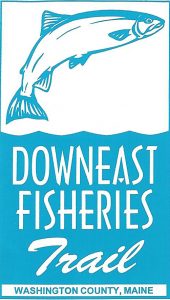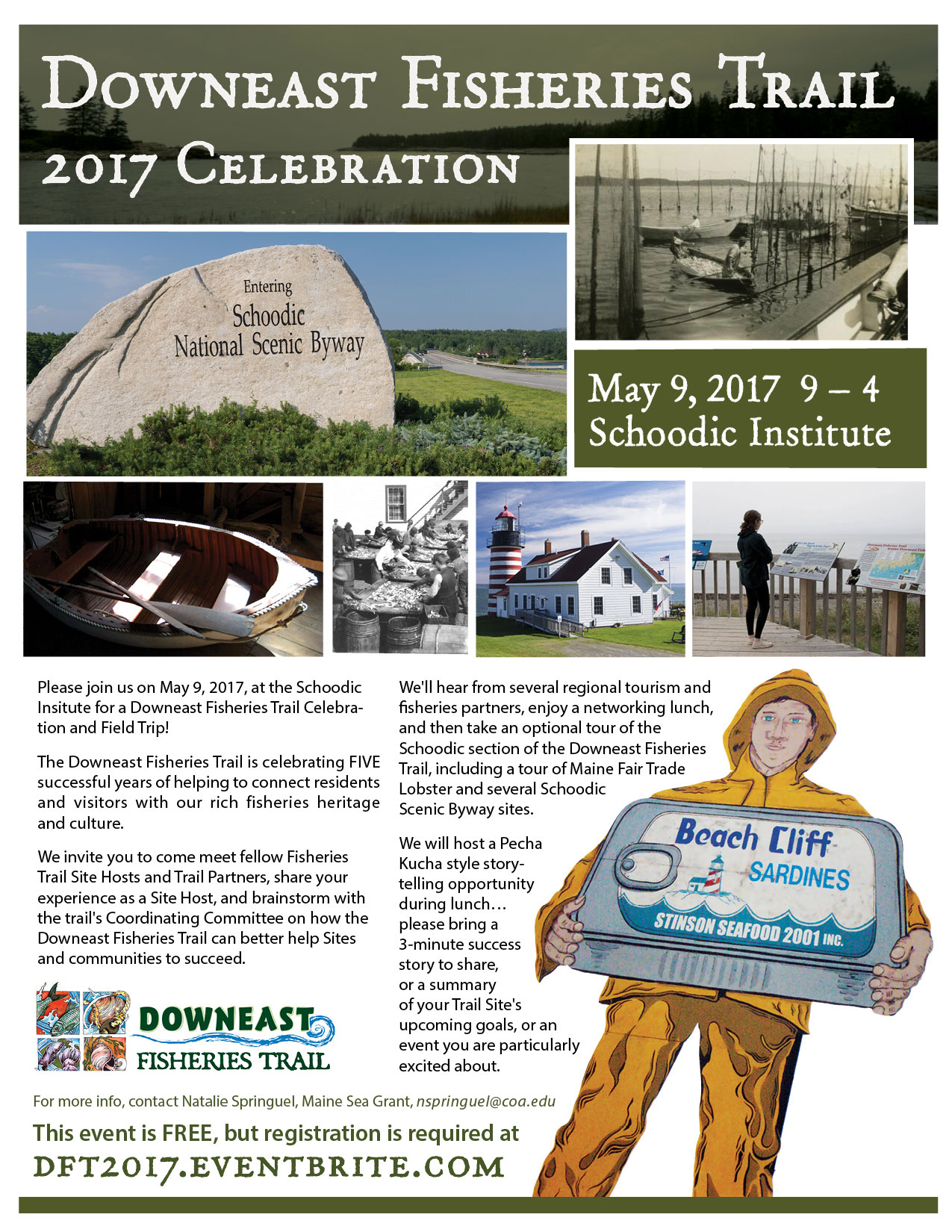
The Downeast Fisheries Trail Celebration

On May 9th 2017, the Downeast Fisheries Trail community of site managers and friends will gather at the Schoodic Institute in Winter Harbor to celebrate the region’s fisheries heritage. The Downeast Fisheries Trail connects 45 historic and active fisheries sites from Penobscot Bay to Passamaquoddy Bay that illustrate the region’s maritime heritage. Sites include fish hatcheries, aquaculture facilities, fishing harbors, clam flats, processing plants, historical societies, community centers, and waterfront parks. Marine resources sustain the culture and economy of Downeast Maine. The Downeast Fisheries Trail builds on these local resources to strengthen community life and the experience of visitors.
Since the Downeast Fisheries Trail was initiated nearly 20 years ago, the concept has grown significantly from 14 sites in Washington County to 45 sites in Washington, Hancock, and Waldo Counties in Maine, and Charlotte County in New Brunswick Canada. The reasons for the Trail, however, have remained constant over the last two decades, as has the commitment to stay true to the original intent: the audience is local as much as visitors, the scope is current as much as historical.
Important changes have occurred within Maine’s fishing industry in the last 20 years, but fisheries and marine resources, including aquaculture, continue to play a central role in Downeast Maine’s economy and culture. Many people still rely on the sea for their living, and many residents and visitors want connections to this way of life. The need for a project that links our region’s fisheries past, present, and future with residents, students, and tourists is as important now as it was two decades ago. Perhaps even more so.
 Downeast Maine has emerged as a leader in its focus on fisheries restoration. Residents and local organizations (many of which are on the Trail) lead the way in developing community fisheries management programs, opening and maintaining diadromous fish passage, restoring critical habitats like scallop beds, exploring ways to grow new species to market, and hosting events that celebrate fish and shellfish. It is no surprise that it is in Downeast Maine that New Year’s Eve is celebrated with a Sardine Drop! (We can thank our friends at the Tides Institute and Museum of Art in Eastport for launching a new tradition steeped in fisheries history).
Downeast Maine has emerged as a leader in its focus on fisheries restoration. Residents and local organizations (many of which are on the Trail) lead the way in developing community fisheries management programs, opening and maintaining diadromous fish passage, restoring critical habitats like scallop beds, exploring ways to grow new species to market, and hosting events that celebrate fish and shellfish. It is no surprise that it is in Downeast Maine that New Year’s Eve is celebrated with a Sardine Drop! (We can thank our friends at the Tides Institute and Museum of Art in Eastport for launching a new tradition steeped in fisheries history).
In the community meetings held in 2010 prior to the re-launch of the Trail, participants emphasized that this project should and could be “so much more than just dots on a map.” A map was produced (it is a trail, after all), but those instructions also inspired an array of stories about our region’s heritage captured and told through signs, displays, oral histories, poetry, articles, and events.
This report was compiled in honor of the Downeast Fisheries Trail five-year celebration at the Schoodic Institute in May 2017. The Schoodic Peninsula is emblematic of the whole Downeast Fisheries Trail region and can serve as a model for communities who have had to reinvent themselves while successfully building on their fisheries and community heritage. The changes along the Schoodic Peninsula, including the closure of the nation’s last sardine cannery and opening of a lobster processing plant at that same site, have illustrated larger trends in the fishing industry, as well as a need to identify ways to stimulate income outside of fishing. Tourism, along with the artists and outdoor adventurers who are part of the tourism economy, is an important and growing factor on the Peninsula, but if the annual Lobster Boat races in Winter Harbor are any indication, fisheries heritage still holds an important place in this community’s heart. And this is exactly the confluence of fisheries and tourism that the Downeast Fisheries Trail seeks to celebrate now and into the future.
Note: this piece was excerpted from a longer report produced to mark five years since the (re)launch of the Downeast Fisheries Trail. Full report.
